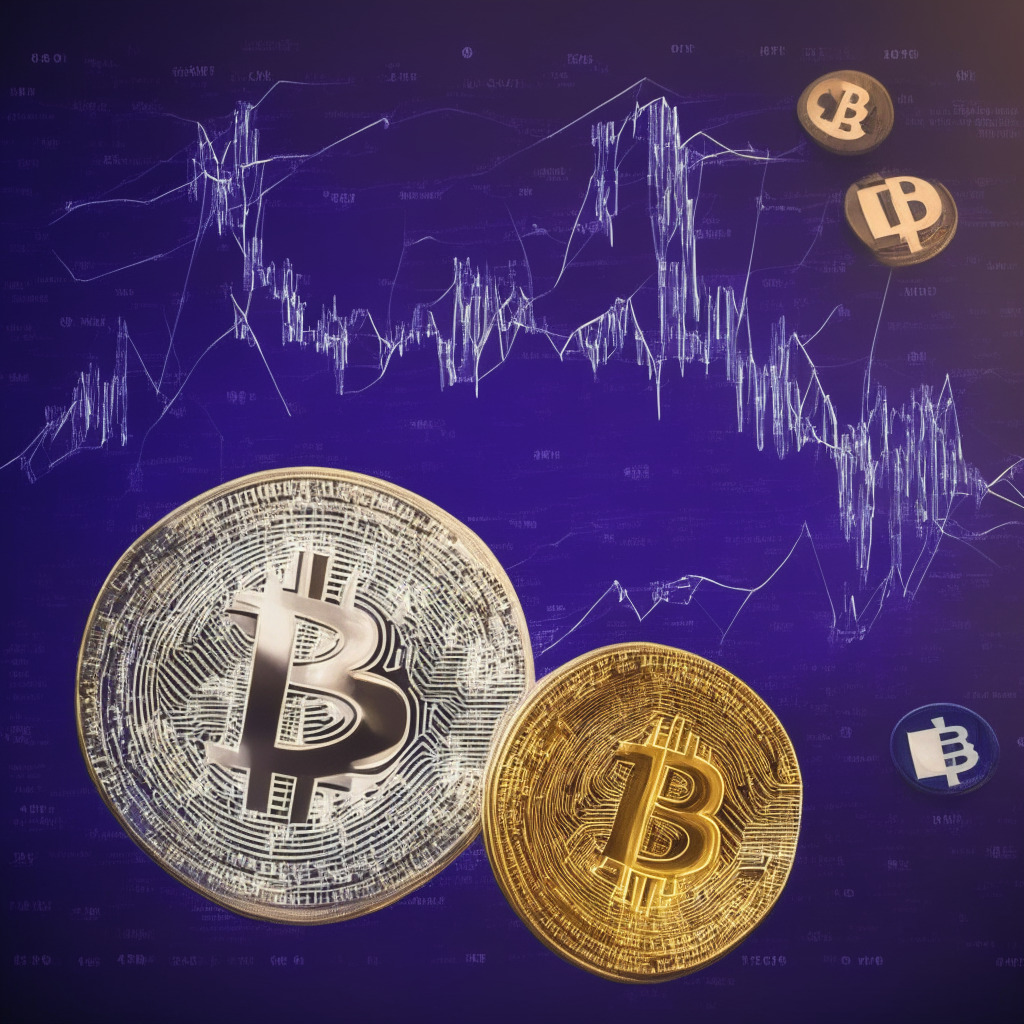The U.S. unveiled surprising data indicating a strong labor market and GDP growth, yet the primary concern on the minds of crypto investors was the ongoing debt ceiling negotiations. Bitcoin recently hovered just below $26,500, demonstrating a slight increase of 0.3%, but still not breaking out of its current range between $26,500 and $27,500 – a trend observed for nearly two weeks. As the U.S. government grapples with political stalemate and potentially dire consequences from being unable to pay its bills, Bitcoin’s 2023 gains have been eroded.
Market analysts like Riyad Carey from digital assets data provider Kaiko, have emphasized the impact of the debt ceiling issue on Bitcoin and the broader crypto market. According to Carey, the absence of significant crypto-specific catalysts in recent weeks has resulted in a rather range-bound market. Looking ahead, he does not expect any drastic shifts in Bitcoin’s price, at least not until the next significant event – the Bitcoin halving, which is nearly a year away. Nonetheless, Carey acknowledged that regulatory developments might shake things up.
Meanwhile, Ethereum has been experiencing similar fluctuations, with its price recently settling around $1,812 – also up around 0.3%. Major cryptocurrencies like MATIC, the token representing the Polygon layer 2 platform, have seen a small rise of 2%, and the CoinDesk Market Index demonstrates a 0.46% increase.
In contrast, tech stocks have soared in response to chipmaker Nvidia’s optimistic sales forecast, attributed to the growth of artificial intelligence protocols. The tech-heavy Nasdaq Composite and S&P 500 indices climbed 1.7% and 0.9% respectively. Simultaneously, safe-haven asset gold continues to decline, with prices currently trading at $1,959 – more than a percentage point less than its recent peak.
Interestingly, assets across the board remained mostly unaffected by the latest U.S. labor market data, which featured 229,000 Americans filing for unemployment benefits. Perhaps a sign of shifting sentiment among market observers, bullish economic news no longer appears to translate into lower crypto prices.
Nevertheless, the debt ceiling negotiations are the primary concern for the time being. Umee CEO and co-founder Brent Xu believes Bitcoin’s positive performance so far this year hinges on resolving this issue promptly. Prolonging the crisis could potentially stall Bitcoin and other digital assets, even forcing prices to drop for an extended period.
For Bitcoin, navigating the uncertainty surrounding macroeconomic and political conditions continues to be a challenge. According to Xu, the digital currency remains in a “crypto Spring phase,” characterized by sideways volatility and occasional pullbacks. Despite near-term difficulties, he predicts that the Bitcoin halving event, scheduled for next year, could send the market off to the races, offering speculators reason for optimism.
Source: Coindesk




